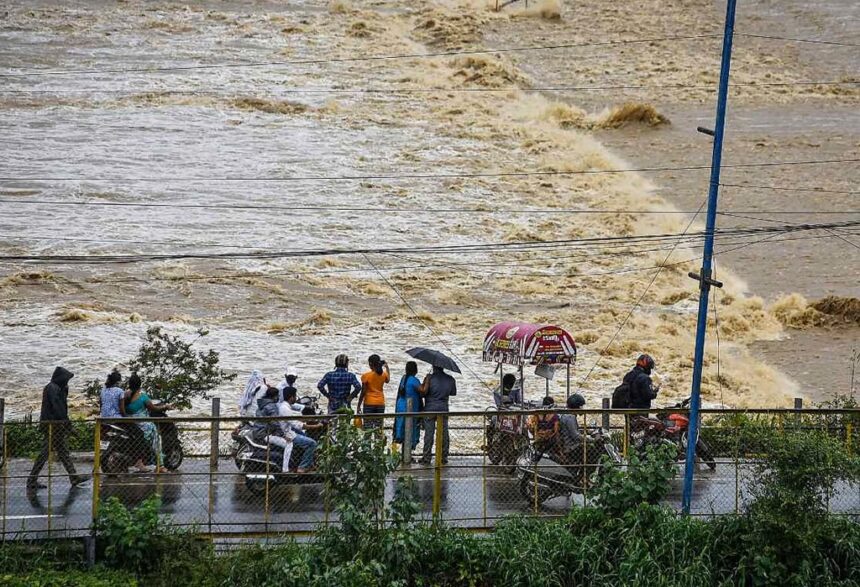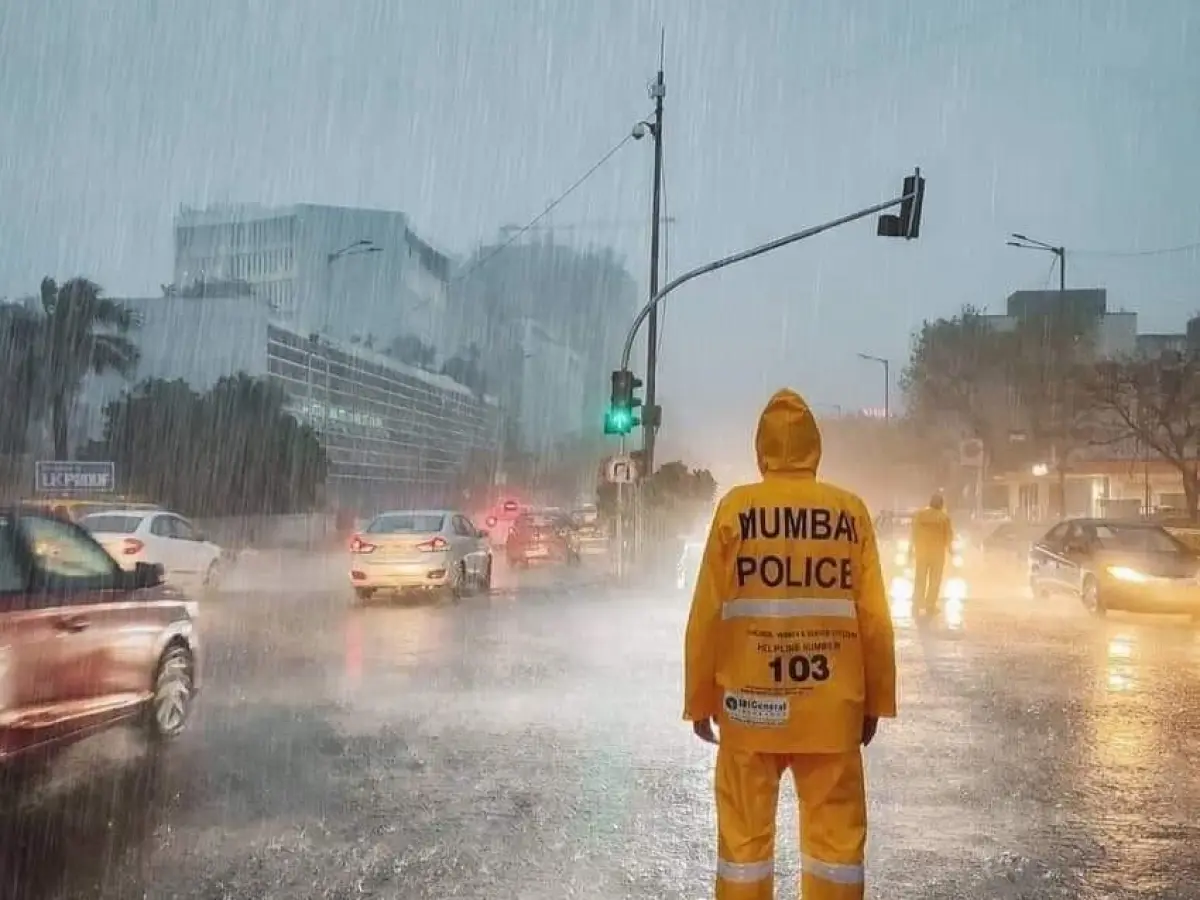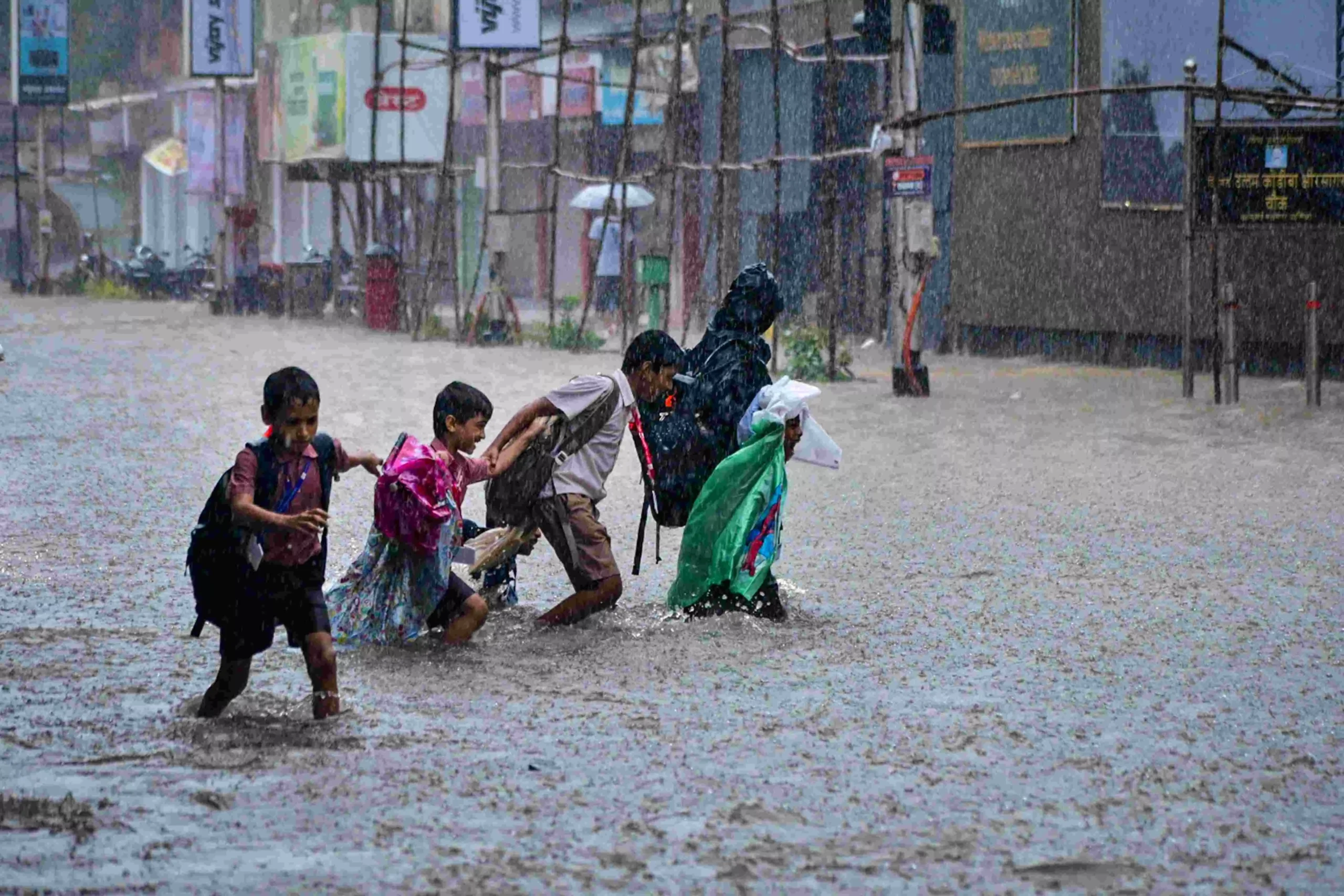KARNATAKA – This year’s monsoon rains have hit India with force, putting the Krishna River basin at the centre of severe flooding. Steady, intense rainfall across the Western Ghats, along with upstream areas in Maharashtra and Karnataka, has swollen the Krishna and its tributaries, bringing chaos to villages and sparking urgent warnings.
While Mumbai, India’s financial hub, struggles under near-constant rain as the India Meteorological Department (IMD) issues both red and orange alerts for the city and nearby districts. Geography, changing weather patterns, and gaps in infrastructure have made the situation worse, with authorities racing to manage the fallout.
The Krishna River, one of the longest in India, has brought both life and loss this season. Starting in the Western Ghats near Mahabaleshwar, it flows through Maharashtra, Karnataka, Telangana, and Andhra Pradesh.
The river, relied upon by millions, now presents a major flood threat as the monsoon intensifies. Exceptionally heavy rain in the upper reaches of Maharashtra has filled reservoirs like Almatti and Basava Sagara to the brim.
All 30 gates of the Basava Sagara Reservoir were opened, releasing around 160,000 cusecs of water. This release has submerged bridges, including Sheelhalli in Karnataka’s Yadgir district, isolating villages such as Kaddaragaddi, Yarigodi, and Hanchinal.
In Sangli, Maharashtra, the Krishna crossed the 40-foot warning mark at Irwin Bridge on August 20. Local officials moved 113 families, or 564 people, out of risky areas. Further downstream, rising water levels at Andhra Pradesh’s Prakasam Barrage have prompted full emergency measures, as inflows from Almatti and Narayanpur reservoirs remain high. The Bhima River, a large tributary, is also above its danger mark, raising worries about flooding in northern Karnataka.
Most of these conditions result from unrelenting rain over Maharashtra’s Western Ghats, where some spots saw more than 200 mm in a day. The IMD expects more heavy showers in coastal and northern Karnataka, with yellow alerts for Bidar, Bijapur, and Belagavi districts.
Opening dams prevents structural loss but floods low-lying communities, submerging fields, homes, and roads. Normally dry regions like Raichur and Ballari have faced rare flooding, with rivers bursting their banks and water spreading across farmland.
Mumbai Issues Rainfall Alert
While the Krishna basin faces rising floodwaters, Mumbai is swamped by its monsoon problems. Rainfall this season has reached a staggering 2,310.8 mm, with 875.1 mm recorded between August 15 and 20 alone. The IMD has announced red alerts for Mumbai, Thane, Palghar, Raigad, and Ratnagiri, warning of heavy rain and winds up to 60 kmph.
The Mithi River, always a worry, crossed its danger limit, flooding nearby areas like Ambedkar Nagar in Kurla and forcing the evacuation of 400 residents.
Decades of construction and fast population growth have put stress on Mumbai’s ageing infrastructure, which cannot cope with so much water. Places like Andheri, Ghatkopar, and Chembur are underwater, throwing local train networks out of action. The Harbour Line of Central Railway was shut for 15 hours on August 20, while 14 long-distance trains were cancelled.
The Mumbai Monorail faced its emergency after two trains stalled, leaving 782 people trapped and requiring rescue by the fire department. Social networks have been filled with videos of swamped roads, stranded cars, and even a child swimming in street floodwaters near a shopping centre.
The Brihanmumbai Municipal Corporation (BMC) has brought out 525 water pumps to reduce waterlogging, but many blame outdated drainage and poor planning for making things worse.
Mumbai, built on reclaimed land from seven islands, has spots that collect water easily, made worse by high tides that trap rainwater in the city. The effects of a warming Arabian Sea have also raised the number of extreme rains over the region, with experts pointing to a threefold increase in such events across central India since 1901.
Impact on Lives and the Economy
The ongoing floods have cost many lives and caused heavy losses. At least eight people died in Nanded district, Maharashtra, after heavy downpours, and emergency teams rescued 350 people from high water.
This season in Thane, 20 have died in rain-related accidents, including drowning, electric shock, and falling trees. A landslide in Raigad claimed a 75-year-old woman’s life, and two died in Vikhroli after a similar incident in Mumbai.
The farming sector has taken a large hit, with state Congress officials in Maharashtra estimating over 1.5 million acres of farmland damaged. Crops in flood-hit areas like Raichur and Ballari have been ruined, putting the incomes of farmers at risk just when planting was finally looking promising.
Transport and road links have also suffered, as bridges and roads are underwater, leaving the Sheelhalli-Hanchinal bridge in Karnataka among those knocked out.
Officials have responded quickly, sending out both National and State Disaster Response Forces to key locations.
Mumbai’s leadership, including Deputy CM Eknath Shinde and CM Devendra Fadnavis, have visited flooded sites, called for people to stay home, and closed schools and colleges. Across Karnataka, local officials stay on alert, have set up centres for evacuees, and keep flood plans in place.
Even so, the repeated nature of flooding signals deeper issues. Some experts point to the removal of mangroves and wetlands or slow progress in improving drainage, as seen after Mumbai’s devastating 2005 floods. The Krishna basin faces its problems with water management between states, as dam releases from Maharashtra affect Karnataka and Andhra Pradesh.
With the IMD predicting more rain, relief work takes priority, but long-term planning is needed. For now, those hit by the monsoon across the Krishna River basin and Mumbai prepare as best they can, hoping for a break in the storms.
















